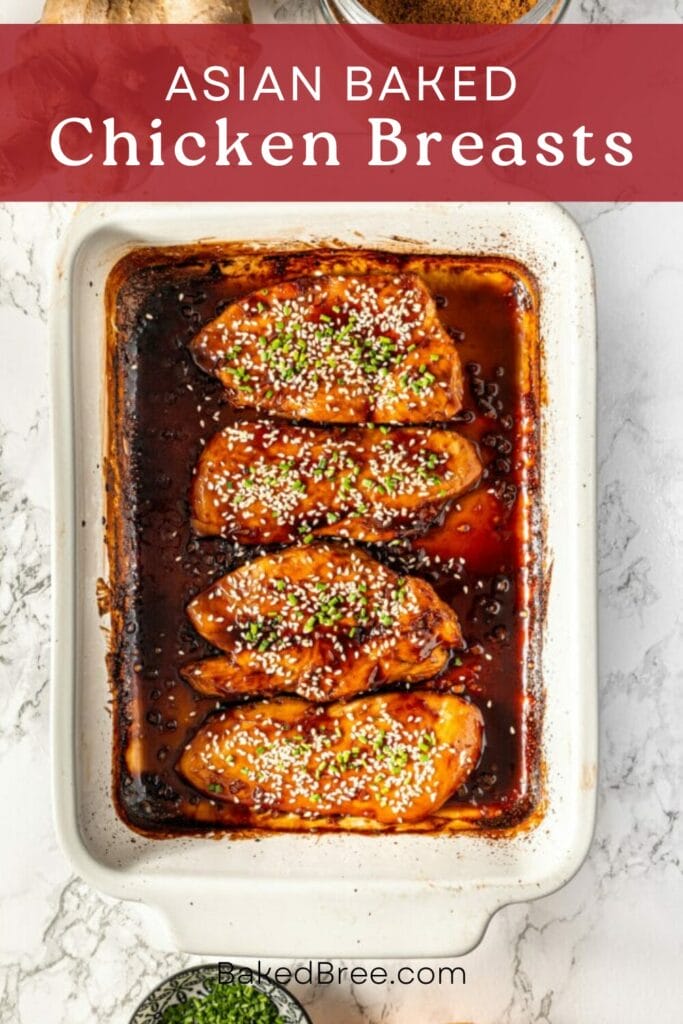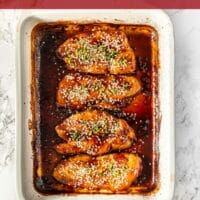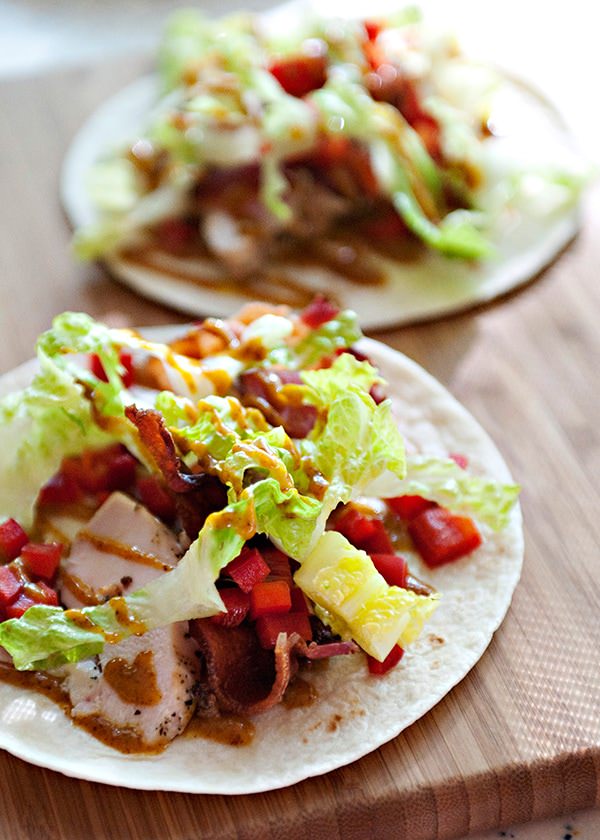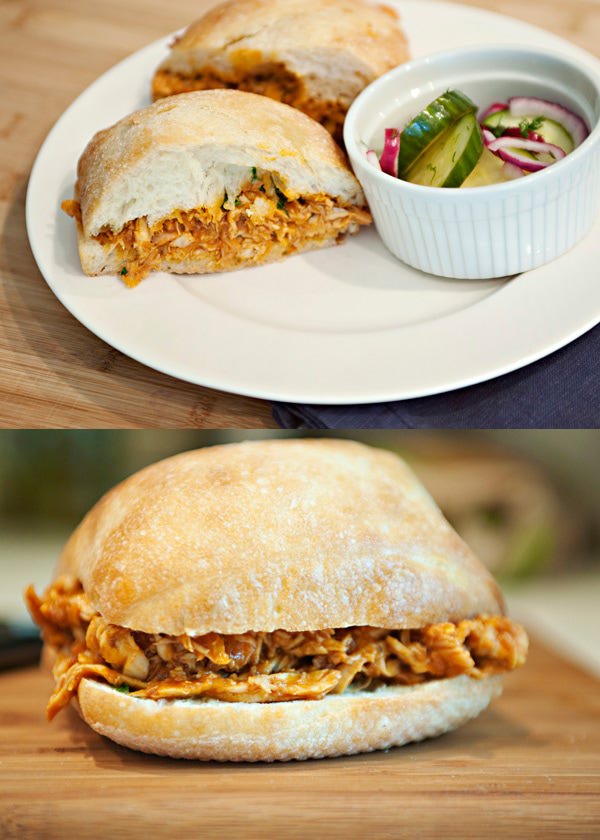Sweet, sticky, and savory: This Asian Baked Chicken Breast is a one-pan recipe that’s easy, delicious, and so easy to make.

Asian inspired dishes are becoming increasingly popular in Western kitchens… and with good reason. The combination of flavors adds sweetness, spiciness, and all-important umami (Japanese for the “essence of deliciousness”) to create a dish of unusual sophistication and depth of flavor. This dish transforms your work-a-day chicken breasts into something tasty and satisfying and is best accompanied with simple sides that allow it to take center stage on the plate. I frequently pair my Asian-Baked Chicken Breasts with my Roasted Brussels Sprouts or my amazing Boursin Mashed Potatoes.
Sticky, sweet, salty and irresistible, Asian-Baked Chicken Breasts uses common North American cooking techniques and combines them with complex and appealing Asian flavors that will put these chicken breasts on your weekly kitchen rotation. It’s also a versatile recipe, and variations in the marinade or even the meat used (try lean pork loin) can increase your dinner repertoire exponentially.
What Kind of Chicken Breast Should I Use?
This recipe calls for the use of lean and healthy chicken breast fillets, but works equally well with skinless, boneless thighs. Though higher in calories, thighs, the cut of choice in many Asian dishes, yield a juicier, tender result. Cutting chicken breast into fillets is very simple and yields portions of uniform thickness which allows for even cooking.
If you’re nervous about slicing your chicken breasts, fear not! It’s simple: Just place the breast on a clean, non-slip board and place your palm firmly on top of the breast. Using a sharp knife with a longer blade (a boning knife works well) carefully cut the breast parallel to the board using long, gentle strokes. Each breast will yield two fillets of uniform thickness. If you like, you can pound out the fillets slightly to make then more even, but this shouldn’t be necessary. And voila! Even chicken breasts ready for cooking.
Ingredients
- 2 skinless boneless chicken breasts 1 ½ lb
- 1 Tbsp hoisin sauce
- 4 Tbsp soy sauce
- 1 orange juiced
- 1 tsp ginger minced
- 2 garlic cloves minced
- 1/4 tsp salt
- 2 Tbsp palm sugar
- Chives chopped, for serving
- Sesame seeds toasted, for serving
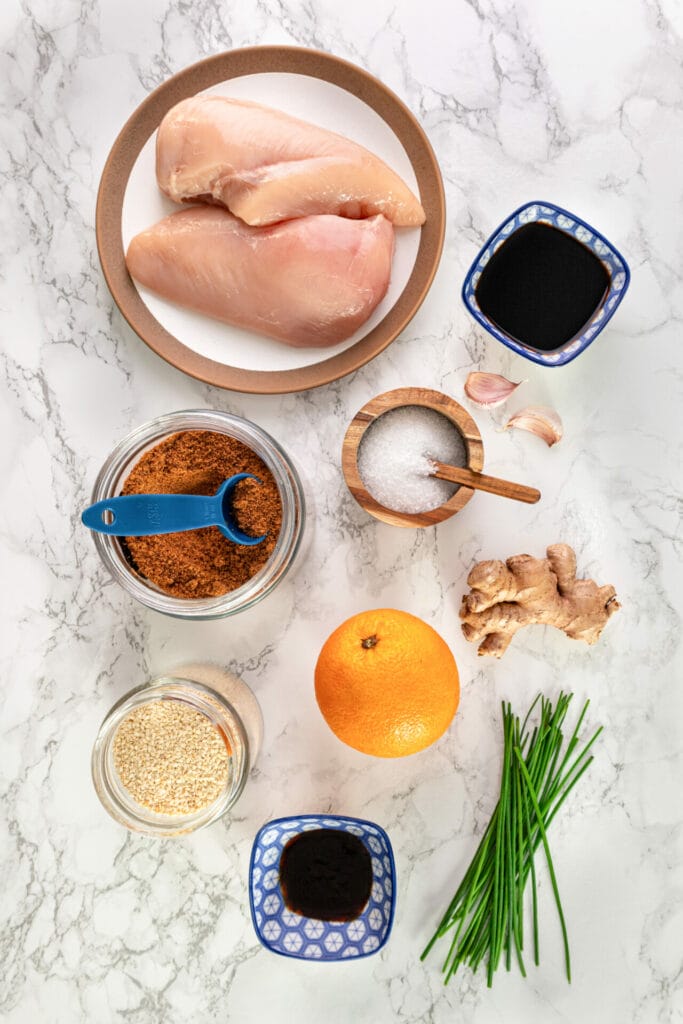
Preparation Steps
Step 1: Slice the chicken breasts in half so that they have the same thickness. This is so each piece cooks evenly.
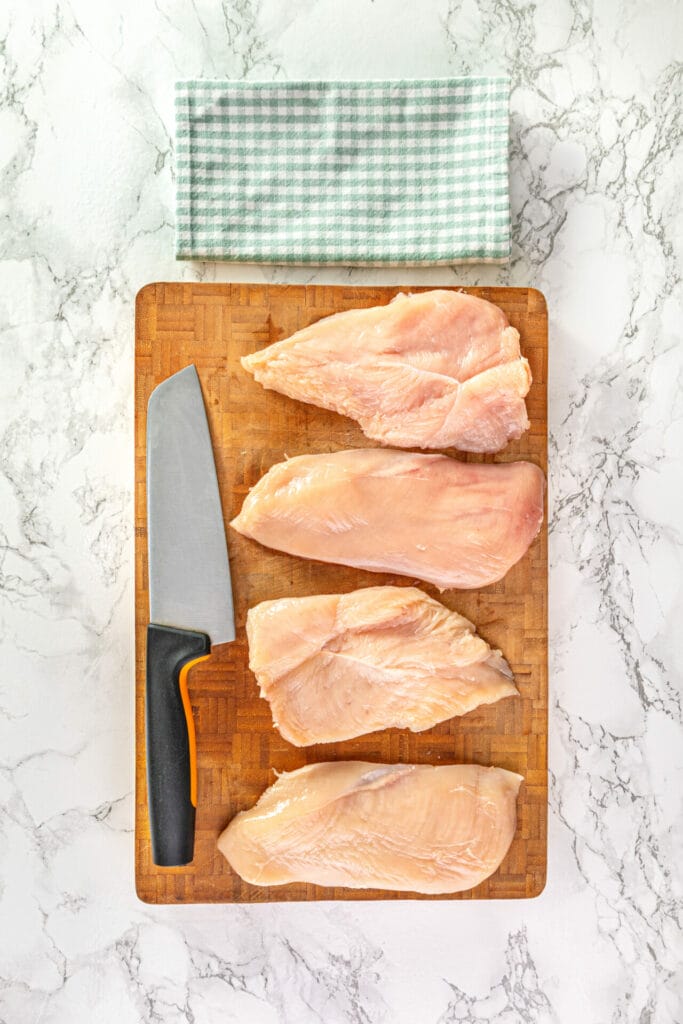
Step 2: In a small bowl, mix the orange juice, soy sauce, hoisin sauce, ginger, garlic, sugar, and salt.
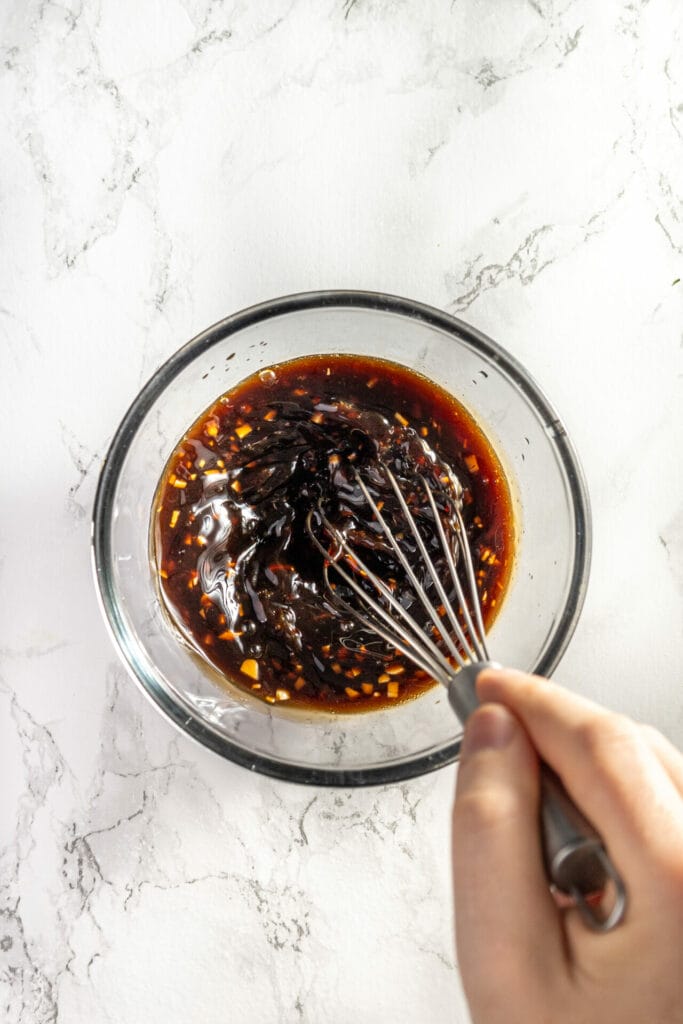
Step 3: In a glass casserole dish, add the chicken breasts, pour 2 tbsp of the sauce on top, and mix the breasts lightly. Cover with a plastic film and refrigerate for an hour (up to 24 hours). Keep the remaining sauce in the refrigerator as well.

Step 4: Preheat the oven to 375°F. Drain the marinated chicken breasts and arrange them on a casserole or a deep tray. Pour the reserved sauce over the chicken and bake for about 30-35 minutes, turning the chicken breasts twice during baking.
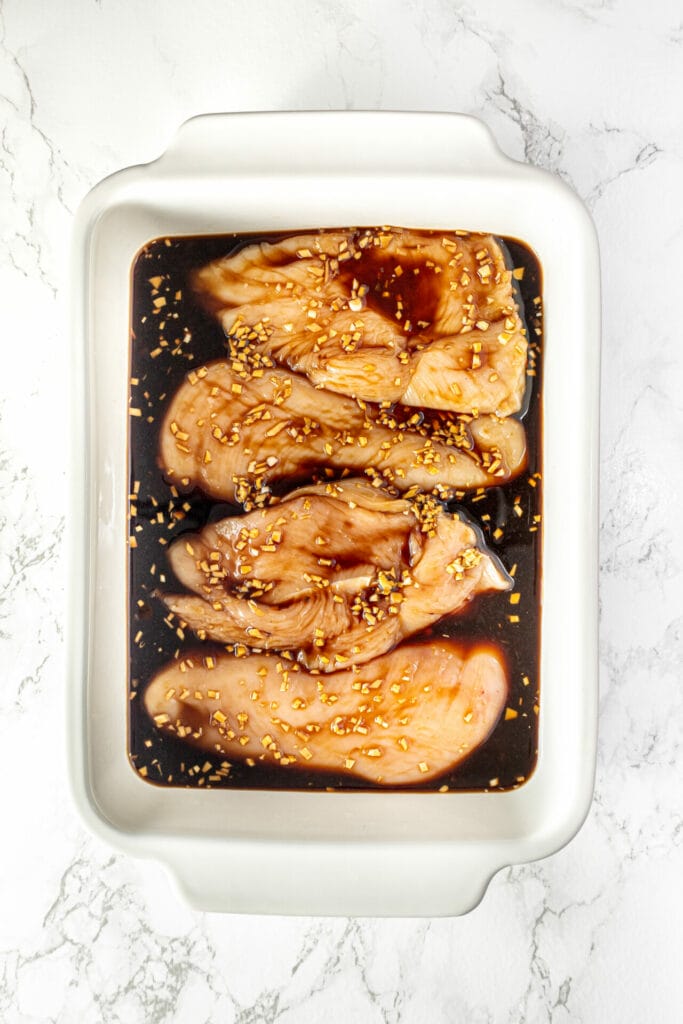
Step 5: Remove the chicken breasts from the oven and let them cool for 5 minutes.

Step 6: Serve with sesame seeds and chopped chives on top, along with a side dish such as rice, broccoli, asparagus, or anything else you prefer.
Top Tips For Perfect Asian-Baked Chicken Breasts
- Be vigilant. Sauces and marinades that use sugar or other sweet ingredients can burn easily if left unattended, leading to bitter flavors and a hard-to-clean pan.
- Make sure the fillets are of even thickness. Chicken breast is great as a low fat and tasty protein, but overcooking it can lead to dry or stringy meat.
- Invest in a meat thermometer. Especially if you favor using super lean cuts, the key is cooking them to the correct doneness and no more. Many a dish has been ruined by keeping it on the heat for an extra few minutes “just to be safe.”
- Watch the salt. Soy sauce, as well as some of the other ingredients used here, can be very salty. Taste the marinade (before you add the raw chicken!) for saltiness. Remember that the flavors will intensify as the chicken cooks, and the salt will intensify too. It’s always easy to add a little later, but it’s nigh impossible to take it away.
- The longer the marinade, the better. Overnight is ideal, though four hours or so will do. The marinade will impart more flavor the longer it sits, and it will help break down the protein fibers in the meat making it more tender.
- Kick things up even more with a little spice! Sriracha, dried chili flakes or a diced fresh hot pepper make an awesome garnish that’ll add some zip to your plate.

FAQs
The magic here is that we’re using indirect heat to make the beautiful sticky sauce. Sugars have a tendency to burn, which leads to bitter flavors. If you’re a grilling pro you can certainly do it, but make sure to avoid brushing on extra marinade until the end of the grilling time.
No worries! Light brown sugar will work just fine.
Once you remove the breasts to let them rest, add ¼-½ a cup of hot water to the pan and whisk it through, scraping up the brown bits. If your casserole can go on the burner, go ahead and heat it up slowly, adding a little cornstarch slurry to thicken it if needed. (A cornstarch slurry is a great thickener for sauces and gravies – in a ramekin, add a little water to one teaspoon of cornstarch and stir.) If your casserole dish isn’t stove-top friendly, put everything into a glass measuring cup and microwave for a few seconds.

Serving Suggestions
The simplest sides are the best. Plain steamed rice with some simple veggies works great. I love my Baby Bok Choy, broccolini (or broccoli) or sauteed Nappa cabbage, but any vegetable will work. Let your imagination (or your crisper drawer) be your guide.
How to Store
Once marinaded, the chicken can be frozen in an air-tight bag for up to three months. Thaw it in the fridge and cook as per the directions in the recipe. Leftover chicken can be stored in the fridge for three days, and it makes a great lunch. Simply slice and serve cold over a salad or Asian slaw.
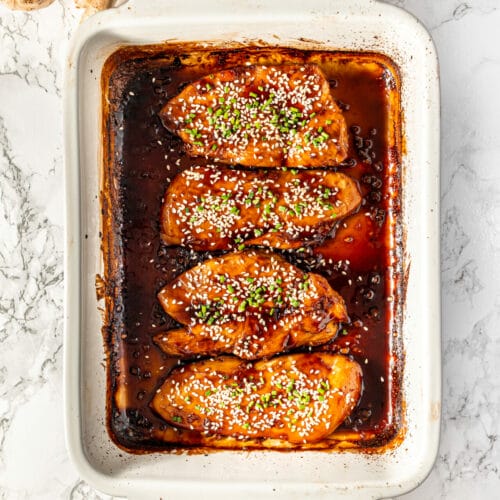
Asian Baked Chicken Breast
Ingredients
- 2 skinless boneless chicken breasts 1 ½ lb
- 1 Tbsp hoisin sauce
- 4 Tbsp soy sauce
- 1 orange juiced
- 1 tsp ginger minced
- 2 garlic cloves minced
- 1/4 tsp salt
- 2 Tbsp palm sugar
- Chives chopped, for serving
- Sesame seeds toasted, for serving
Instructions
- Slice the chicken breasts in half so that they have the same thickness. If you don’t cut them to the same thickness, they will cook differently.
- In a small bowl, mix the orange juice, soy sauce, hoisin sauce, ginger, garlic, sugar and salt.
- In a glass casserole, add the chicken breasts, pour 2 tbsp of the sauce on top, and mix the breasts lightly. Cover with a plastic film and refrigerate for an hour (up to 24 hours). Keep the remaining sauce in the refrigerator as well. By marinating the chicken breasts, the sauce adds flavor to the meat and will become more tender after cooking.
- Preheat the oven to 375°F. Drain the marinated chicken breasts and arrange them on a casserole or a deep tray. Pour the reserved sauce over the chicken and bake for about 30-35 minutes, turning the chicken breasts twice during baking.
- Remove the chicken breasts from the oven and let them cool for 5 minutes.
- Serve with sesame seeds and chopped chives on top, along with a side dish such as rice, broccoli, asparagus, or anything else you prefer.
- Enjoy the meal!
